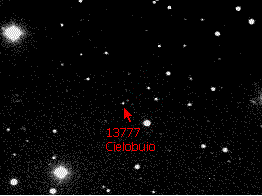Lo scorso mese di ottobre si è tenuto a Boston l’annuale convegno dell’International Dark-Sky Association, per la prima volta lontano dalla sua sede di Tucson. In questa edizione non sono stati tanto gli astrofili o gli astronomi a discutere di inquinamento luminoso, quanto i ricercatori delle più diverse discipline, dagli ornitologi agli studiosi di epidemiologia dei tumori. Nell’articolo che segue, in inglese, il resoconto di Steve Nadis, corrispondente da Boston di Nature.
(Nature, vol. 419, 31 ottobre 2002, pag. 868).
Biologists join drive to turn down the lights.
The fight against light pollution is becoming a multidisciplinary endeavour. Last week’s meeting of the International Dark-Sky Association (IDA), which would once have been an event purely for astronomers, featured researchers working on topics as diverse as migratory birds and breast cancer.
Astronomers attracted little interest when they first complained about the glow from urban areas in the 1950s, but the dark-sky movement has grown rapidly since the IDA was formed in 1988. Astronomy was deliberately played down at this year’s meeting, and was the subject of only one of some 40 presentations. “If it’s just a concern for astronomers, many people will dismiss this as a narrow, special-interest group,” says Dan Green of the Harvard-Smithsonian Center for Astrophysics in Cambridge, Massachusetts, one of it the event’s organizers. “We’re stressing the security, energy-efficiency, health and ecological benefits of good lighting.”
Cancer epidemiologist Richard Stevens, from the University of Connecticut in Farmington, provided one example of this wider focus. He discussed potential links between the increased incidence of breast cancer, especially in the industrialized world, and the way in which exposure to light at night can disrupt natural secretion cycles of the hormone melatonin. Low levels of melatonin, which is thought to be responsible for our daily, or circadian, biological rhythms, have been linked to breast cancer.
Stevens cited recent studies of visually impaired men and women, which show that breast-cancer risk declines with decreasing vision (P. K. Verkasalo et al., Br. J. Cancer 80, 1459-1460; 1999). Although Stevens’ work is not specifically concerned with light pollution, other meeting participants tried to make the link, suggesting that light trespass into homes and apartment buildings from street lights and other sources is more than capable of perturbing circadian rhythms.
Other speakers addressed risks posed to migrating birds by outdoor artificial lighting. Ornithologist Richard Podolsky of the Technology Planning and Management Corporation, an environmental services organization based in Scituate, Massachusetts, described his research of offshore birds. Atlantic puffins, which rely on the Moon for navigation, become confused by illuminated structures at sea, says Podolsky, often circling them until they crash or die of exhaustion.
Delegates at the meeting also paid tribute to the progress made by the IDA. David Crawford, an astronomer from Kitt Peak National Observatory in Tucson, Arizona, and the IDA’s executive director and cofounder, began the campaign in the late 1960s by joining the Illuminating Engineering Society of North America (IESNA), an organization that aims to set standards for outdoor lighting. “Two decades ago, we hated those guys and used to run from them,” recalls IESNA president Randy Reid. “We thought they were a bunch of left-wing lunatics. But Crawford persuaded us that he didn’t want to turn the lights out, he just wanted us to direct light where it was needed, without illuminating the whole sky.”
Steve Nadis, Boston





